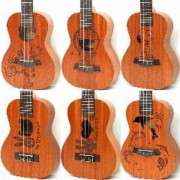Home lessons for a pianist: how to make working at home a holiday, not a punishment? From the personal experience of a piano teacher
Contents
Doing homework is an eternal stumbling block between teacher and student, child and parent. What we don’t do to get our beloved children to sit down with a musical instrument! Some parents promise sweet mountains and a fun time with a computer toy, others put candy under the lid, some manage to put money in sheet music. Whatever they come up with!
I would like to share my experiences in the field of musical piano pedagogy, because the success of a pianist’s home practice directly affects the success and quality of all musical activities.
I wonder if music teachers have ever thought that their job is similar to that of a doctor? When I write homework in my young student’s journal, I consider that it is not an assignment – it is a recipe. And the quality of homework will depend on how the task (recipe) is written.
I find myself thinking that we need to organize an exhibition at school of “blunders” of teachers’ assignments. There are enough masterpieces! For example:
- “Polyphonize the texture of the play!”;
- “Study at home many times without interruption!”;
- “Define the correct fingering and learn!”;
- “Figure out your intonation!” etc.
So I imagine how a student sits down at the instrument, opens the notes and polyphonizes the texture with intonation and without interruption!
The world of children is structured in such a way that the main incentive and impetus for any action of the child becomes INTEREST and PLAY! It is INTEREST that pushes the baby to the first step, to the first bruise and bruise, to the first knowledge, to the first delight. And GAME is something that is interesting to any child.
Here are some of my games that help spark and maintain interest. Everything is first explained in class, and only then is assigned homework.
Playing the editor
Why present dry knowledge if you can push the student to search for it. All musicians know the value of good editing. (And it makes no difference to the average student whether to play Bach according to Mugellini or Bartok).
Try to create your own edition: sign the fingering, analyze and designate the form, add intonation lines and expression marks. Complete one part of the play in class, and assign the second part at home. Use bright pencils, it’s very interesting.
Learning a piece
All teachers know G. Neuhaus’s three famous stages of learning a play. But children don’t need to know this. Calculate how many lessons you have until the next academic concert and together outline a work plan. If this is 1 quarter, then most often it is 8 weeks of 2 lessons, for a total of 16.
Creative editing by a student. Photo by E. Lavrenova.
- 5 lessons on parsing and combining in two;
- 5 lessons for consolidation and memorization;
- 6 lessons on artistic decoration.
If a student accurately plans his work plan, he will see “where he stands” and correct his homework himself. Left behind – caught up!
Synthesis of arts and the game of researcher
Music is a full-fledged art form that speaks its own language, but a language understandable to people of all countries. The student must play consciously. . Ask the student to find three performances of his piece on the Internet – listen and analyze. Let the musician, as a researcher, find the facts of the composer’s biography, the history of the creation of the play.
Repeat 7 times.
Seven is an amazing number – seven days, seven notes. It has been proven that it is repetition seven times in a row that gives the effect. I don’t force children to count with numbers. I put the ballpoint pen on the DO key – this is the first time, RE is the second repetition, and so with repetitions we move the pen up to the note SI. Why not a game? And it’s much more fun at home.
Class time
How much a student plays at home is not important to me, the main thing is the result. The easiest way is to analyze the play from beginning to end, but this will certainly result in failure. It’s more effective to break everything up into pieces: play with your left hand, then with your right, here with two, there by heart the first part, the second, etc. Allow 10-15 minutes a day for each task.
The purpose of classes is not the game, but quality
Why “peck from start to finish” if one place doesn’t work out. Ask the student the question: “What is easier to patch a hole or sew a new dress?” The favorite excuse of all children, “I didn’t succeed!” should immediately find a counter question: “What did you do to make it work?”
Ritual
Each lesson should have three components:
Drawings for music. Photo by E. Lavrenova.
- technology development;
- consolidation of what has been learned;
- learning new things.
Teach the student to finger warm-up as a kind of ritual. The first 5 minutes of the lesson are warm-up: scales, etudes, chords, exercises by S. Gannon, etc.
Muse-inspiration
Let your student have a muse-assistant (a toy, a beautiful figurine, a memento). When you feel tired, you can turn to her for help and energy replenishment – it’s fiction, of course, but it works great. Especially when preparing for a concert performance.
Music is joy
This motto should accompany you and your student in everything. Musical lessons at home are not a lesson or a punishment, they are a hobby and passion. No need to play for hours. Let the child play in between doing homework, devoting himself not to work, but to his hobby. But he plays with concentration – without working TVs, computers and other distractions.





